In 1980 Atari continued its success, this time with Battlezone, the first tank simulator and also the first game with a three-dimensional look. It made such an impression that the U.S. Army commissioned Atari to make a new and improved version for army soldiers to practice as a training game without having to take risks and without having to use heavy equipment. It was the game that had the most controls: "nothing less" than a lever and 5 buttons.Another of the "big ones" that appeared that year was Missile Command, from (of course) Atari, the typical game of shooting missiles (or small gratings) before they leave you dry. But above any game, the classic of the year was not an Atari game, but a Namco game, a game that has gone down in history as one of the most fun and original of all time, the Pacman:
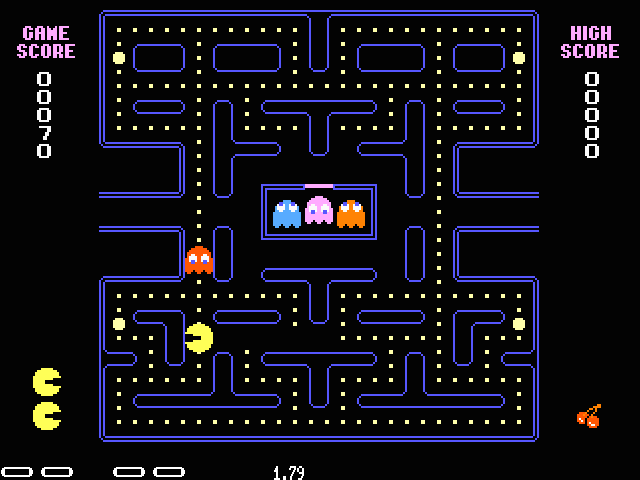
This game, known to all, had an unparalleled success until then and produced such an impact that it was dedicated a cover of Time Magazine, a cartoon series and a song that caused a furor. That yellow "ball" capable of swallowing hundreds of "balls" (you have to know how to distinguish the term "ball" from "ball") while avoiding being eaten by ghosts that became weak when the bogeyman swallowed a coconut of almost its size (which must be radioactive, because otherwise, the sudden change of color of the ghosts cannot be explained) was a formula that many later video games have taken indirectly as the main argument (some very indirectly).
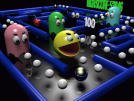
81 arrived, accompanied by a lot of super classics such as Donkey Kong, which I have already talked about before, the first game in which Mario appeared. We have to say that Nintendo had some problems with Universal Studios, since they claimed that Donkey Kong had a more than reasonable resemblance with their King Kong, so they sued Nintendo. Without further problems Nintendo won the lawsuit. After that bombshell, Atari did not lag behind and launched Tempest, the first game with color vector graphics and Centipede, the game in which you had to shoot a centipede and the first one programmed by a woman, Dona Balley .In this year appeared games that will never get old as Frogger by Konami or Galaga by Namco, huge classics, with hundreds of "remakes" later.
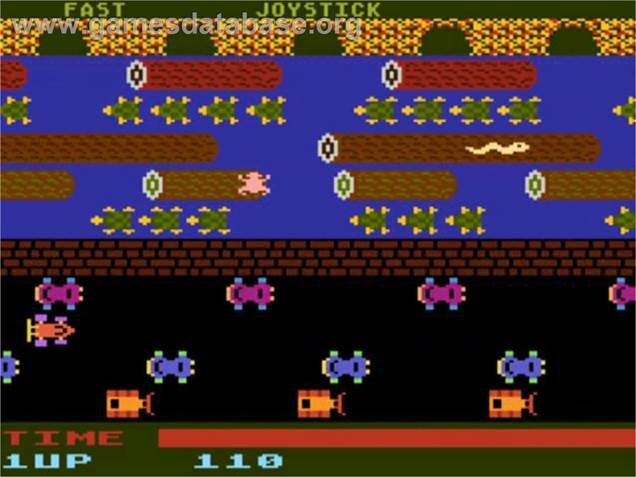
In addition, the second part of Pacman was released, also by Namco: Miss Pacman, which even being identical to the first one, except for the main character (who was now female), was almost as successful as its predecessor. Atari was beginning to worry about the competition.
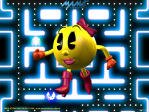
Unlike the previous year, 1982 was not a year of "unforgettable classics", well, yes it was, but it could never have been had it not been for the previous years, for which it can be said to be the year of the second parts:To the market this year appeared games in which stand out: Super Pacman, Millipede (the continuation of Centipede), Donkey Kong Jr, Burger Time, Dig Dug, Moon Patrol, Popeye (left) (one of the favorites of the time, but inspired by "my monkey friend" D.Kong), Star Trek, Mr. Do (which later became a second part of Centipede), and the second part (which later became a second part of Centipede). Do (which later became a huge saga by Universal), Time Pilot, Q'Bert and the "original classic" of the time, properly speaking: Sega's Zaxxon, which featured the revolutionary novelty of including a boss at the end of the stage.
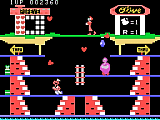
1983 was the year of cinema in videogames: for the first time the plot of a movie was included in a videogame with Tron (based on the Disney movie of the same name), and as a result, more games with a cinematographic plot began to be released, such as Star Wars by Atari or the second part of Tron. The year 83 also brought with it the first part of Dragon's Lair, that game in which you played "inside" a movie in which you could interact, created by Cinematonics. It used Laser Disc technology for the first time. Some time later came M.A.C.H. 3, which also used this technology and was the first to use real video scenes for a game: the background was a real video sequence, while in the center of the screen appeared airplanes and helicopters that were the real protagonists, created by computer.
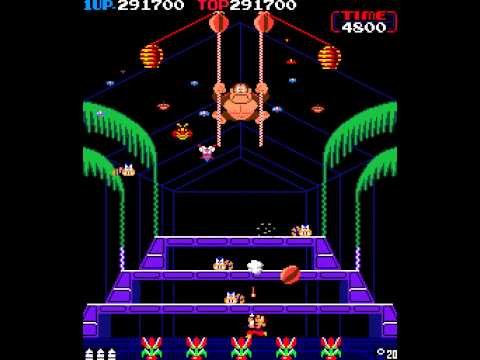
Also in this year, Nintendo released Donkey Kong 3, a game that completely changed the style of its predecessors and therefore, did not succeed as expected. It also released Mario Bros, where finally, the protagonist of D.Kong, Mario and his brother Luigi (this appeared for the first time) had the opportunity to enjoy their own game in which their task was to clean the pipes of all kinds of bugs.
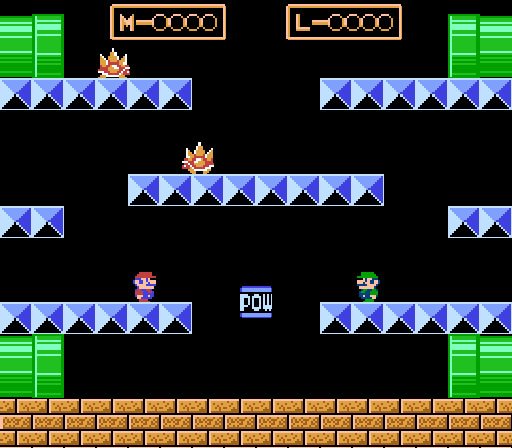
s a result of his success, Mario officially became the mascot of Nintendo, which precisely this same year released its first independent console (as it had previously partnered with other companies), but only for Japan: the Famicom (Family Computer, known in Spain as Nintendo) that would not reach the rest of the world until 1985.
With the beginning of 1984 a new company appeared: Capsule Company (better known as Capcom) that would bring much to talk about in the future.
84 was not a very good year for the "video game" industry despite the release of classics such as:1942, Bomb Jack, Star Force, Pac-Land (where Pacman debuted in platform games), Lode Runner (great classic), Kung Fu Master and Paperboy.
The videogame market during this year suffered a serious crisis, both in the computer sector, as well as in the arcade and home consoles. So much so that it caused many companies to sink into a bottomless pit, among which stand out: Universal, the creators of Mr. Do!, which at the time of its closure had in project the fifth part of its saga ready to appear in Laser Disc format and the American branch of Sega, which retired to Japan and did not return to America until 2 years later founding Sega of America, still active.
The year 1985 saw video games begin to recover.
Nintendo finally launched its Famicom in America after the tremendous success obtained in Japan with its console and with the recently released Super Mario Bros, a game commissioned by Yamauchi (the director of Nintendo) to Miyamoto, who until then had been programming for Nintendo and Atari together, which broke the mold with everything seen before. It was a long, colorful game... Come on! Who doesn't know the first Super Mario?
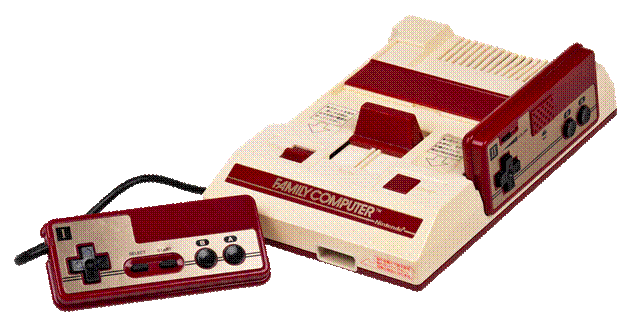
The arrival of the Famicom in the U.S. was to be done in a big way, so the name was changed to Nes (Nintendo Entertainment System) and also the model was changed to a more serious "home video" model. Nintendo wanted to make it clear that its console was not a simple "toy" for children, but a household appliance that should be present in every home. It had an 8-bit graphics engine far superior to the Atari 2600 (queen of consoles since its release) and in fact, the Nes was the only console capable of dethroning the "queen" selling more than any video game system until then, and only comparable today with Playstation. It marked the second era of video games and the beginning of Nintendo's hegemony in this market.
The most important games of this year were: Pitfall 2 by Sega, Indiana Jones and the Temple of Doom and Epire Strikes Back by Atari, Commando and Ghosts'N Goblins (unforgettable) by Capcom and Dig Dug 2 by Namco. Finally, one of the first soccer games that appeared this year, Tehkan World Cup for arcade, deserves to be remembered.
And then, as if it were not enough, 1986 arrived ready to show a great number of outstanding quality videogames. This year were released a lot of games that today are legendary, such as Out Run (first game to use the Scaling technique, by which the graphics become larger as they approach the screen, thus providing more sense of speed, although the quality decreases because the pixels become larger) noted for its music and rendered voices and Wonderboy, by Sega, Arkanoid and Bubble Bobble (both by Taito), and finally Rygar by Tecmo (formerly Tehkan).
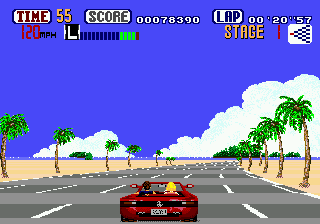
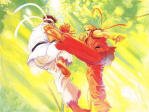
87 was the year of the arcade: three companies stand out for the importance and quality of their releases: Sega, Capcom and Taito. Among Sega's games, the following stand out: After Burner, Alien Syndrome, Shinobi, Heavyweight Champ, SDI -Strategic Defense Initiative and Wonder Boy In Monster Land. Among the Capcom games, only two are the most important: 1943 Battle Of Midway and Street Fighter. 1943 Battle Of Midway is the sequel to 1942, a game released by Capcom in 1984. As for Street Fighter, legends say that it is based on a manga (Japanese comic) called Kung Fu Tao, published in 1984 by Magazin magazine, in which the young Ryu meets several fighters from other countries in a tournament in Hong Kong.
1988 brought with it some classics like Ghouls and Ghosts (second part of Ghosts and Goblins), Ninja Gaiden (of which they have now released a new version for PS2), Konami's Super Contra... but above all, this year's classic is perhaps the most classic classic and the most important videogame in history, do you know which one?
Tetris: Yes, Tetris, work of Atari, that puzzle game that consists of fitting pieces in different ways. That and no other, Tetris is so far the best-selling and most popular game in the history of video games.
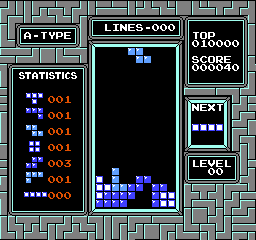
For its simplicity, and complexity at the same time, this game has hooked everyone to a console. It appeared on almost all consoles and even today new 3D versions are still being made (below), but where it was going to be most successful was on Game Boy, which was still a year away from its release...

If we think about the success of Tetris, we must highlight its creators, the Russians Alexei Pazhitnov and his partner Gerasimov.
CONCLUSIONS
This decade was undoubtedly the point of inspiration for many future programmers, and although there were still many things to come, such as the move to 3D, nothing has been as important as this era, which many people have already forgotten.
We still have a long way to go to cover everything that has been done so far in this subject, but with this work we wanted to treat the history of when they arose and how video games were developed, so we leave as a proposal to continue this work developing it to the current stage, adding technological curiosities that make current video games become a "dangerous" entertainment.
Let's use video games as a form of recreation and learning, always bearing in mind that some of them can deform our personality and even contribute to the loss of human values.
.Thank you for reading ®